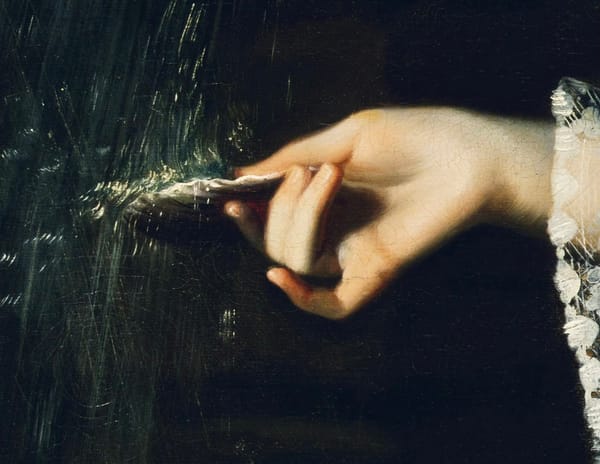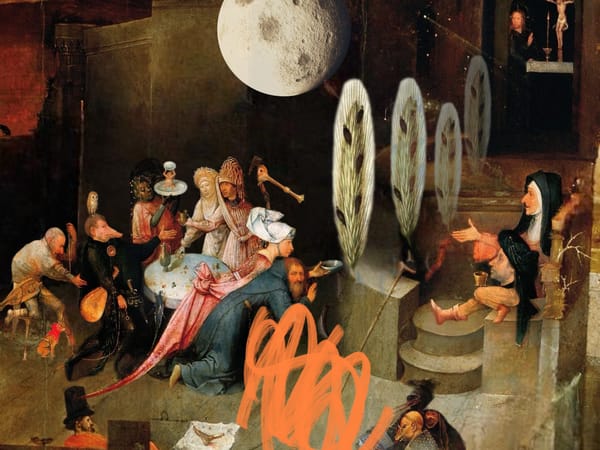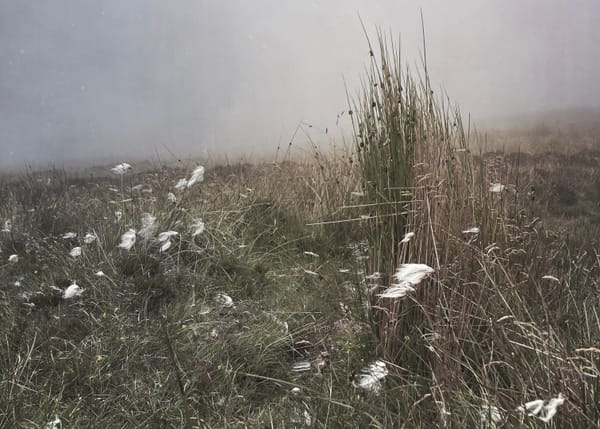HELL HOLES AND HOLY WELLS
pilgrimage, paradox, and the lurgy
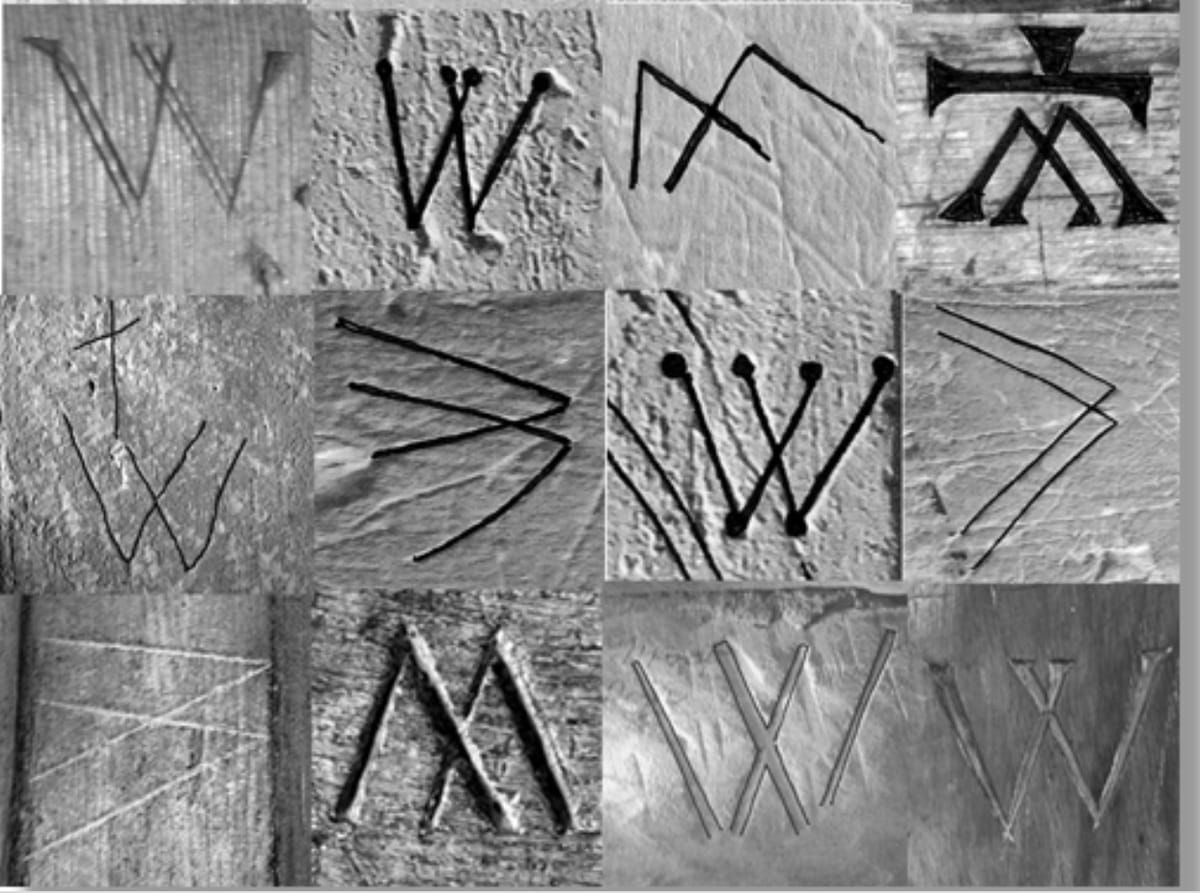
When I went to the Haley Hole well outside of Stromness, I was feeling the start of something bad—malaise and the beginnings of tenderness at the back of the throat. I have not been sick in over four years, but despite all my cautionary measures—isolation, masking in public and perpetual hand sanitising—I caught something. All Covid tests have come back negative, but I remain ever vigilant. ‘Just a cold’ will never be a simple matter for me, and has often landed me in hospital, even before the pandemic.
M. saw the well on the Megalithic Portal and said we could find it—it was just off the road near a patch of community allotments. It was easy—it would have to be. I can no longer trek indefinitely hoping to find a stone, a well or other remarkable feature in the landscape. I need to know how I will get there, what the terrain is like, and how long the trek will be. Will I have to climb over or through anything? Even knowing these things, I may not be able to get there. I am not as intrepid a trespasser as I once was. I can’t run if I needed to, and being ill makes me feel vulnerable instead of invincible.
Missives from the Verge is a reader-supported publication. To receive new posts and support my work, consider becoming a free or paid subscriber.
It is unseasonably hot in Orkney—grimly, agonisingly hot. It’s a California heat, but with a delirious northern brightness—intense and unending. I went into the sea yesterday; it was like bathwater in the shallows. The North Sea should be not be warm. The earth is fevered. It was a revelation for me to realise my body was suffering in the same way. It’s one thing to intellectualise this—we are the earth, etc. As I waded into the febrile tide I understood the connection through my pain and in my bones.
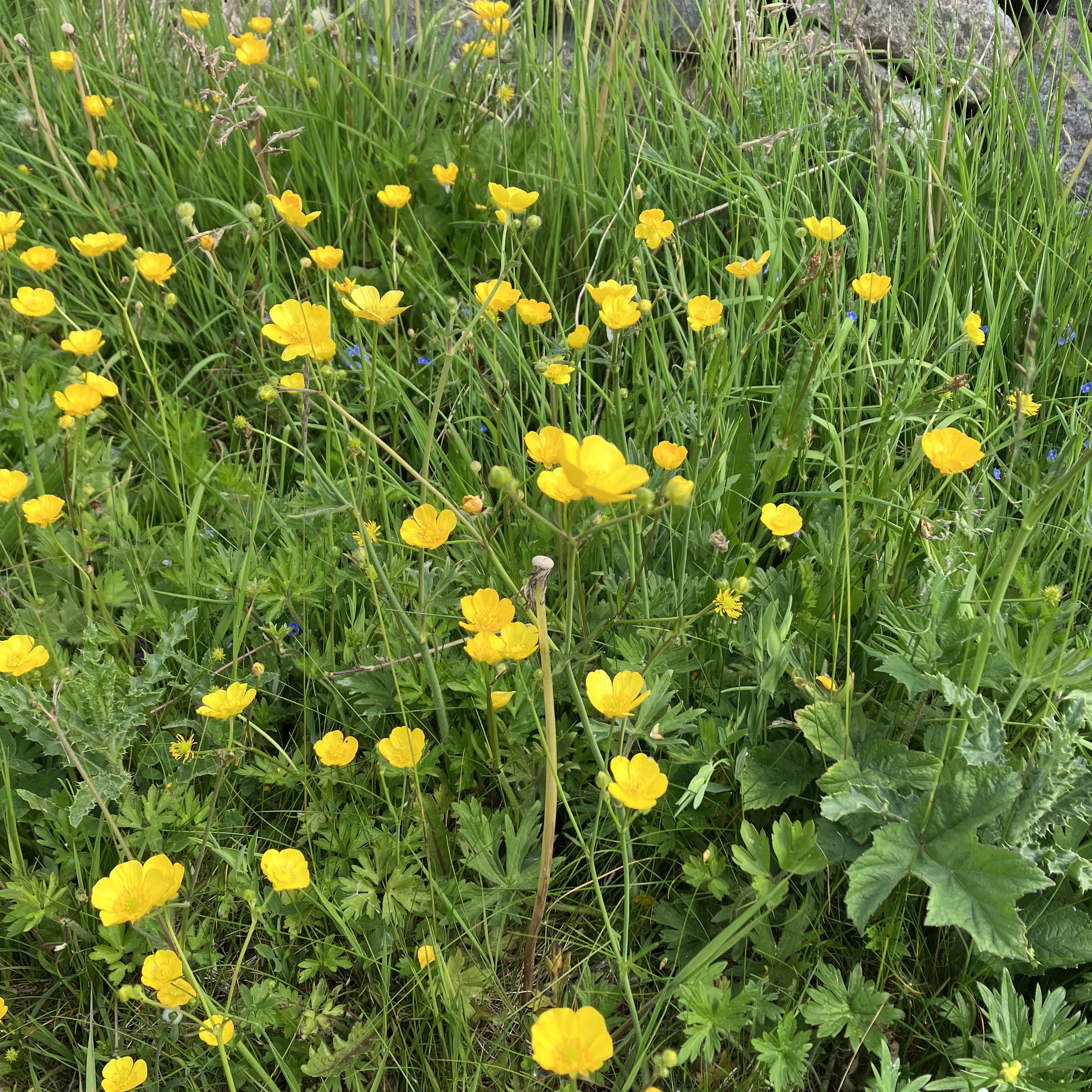
In this blistering heat, M and I make our way to Haley Hole. Along the verges, creeping buttercup nod in their thousands. They are the attar of Orkney summer sunlight on their spindly stems. This plant was once thought to be a plague cure. Many have forgotten their names and have used herbicides on ‘weeds’ like buttercup, but they still wait for us to remember the old friendships we once shared with them. Inconspicuous coronas of Ribwort plantain are blooming, too. Plantain is a cough tonic when prepared correctly—something I should perhaps learn, and quick. There’s another cough remedy—speedwells, or angel eyes, peeking out beside them. A patch of blue tansy hovers ghostly in the distance—flowering early. It’s a ferrylouper, an incomer like me. This plant was originally native to Southern California and Mexico, now used in Scotland as a bee plant and to manage soil erosion. Across Hoy Sound, a distant haze shrouds the island of Hoy with a vestal vibe. Oystercatcher sentries keep vigil on fence posts. Their Orkney name is sometimes skelder, which also means noisy talk. I have finally figured out it’s their gossip I wake to every morning.
When I visit, the Haley Hole well is dry, but then, I expect as much. A scab of rust lies amongst the rubble, and the lace of spiderwebs cling to crevices in the stones. The house once had a door and even a ladle for drinking, but now all that’s left is a corroded hinge. The archeological record says this is a chalybeate well— an iron-rich well, like the Red Well in Glastonbury whose waters taste of blood. Chalybeate Wells, like the renowned Tunbridge Wells in Kent, were once said to cure melancholy and ‘the vapours.’ The waters 'loosened the clammy humours of the body, and dried the over-moist brain.’ My brain is indeed over-moist at the best of times and if this angst could be aired out I would benefit most gladly.
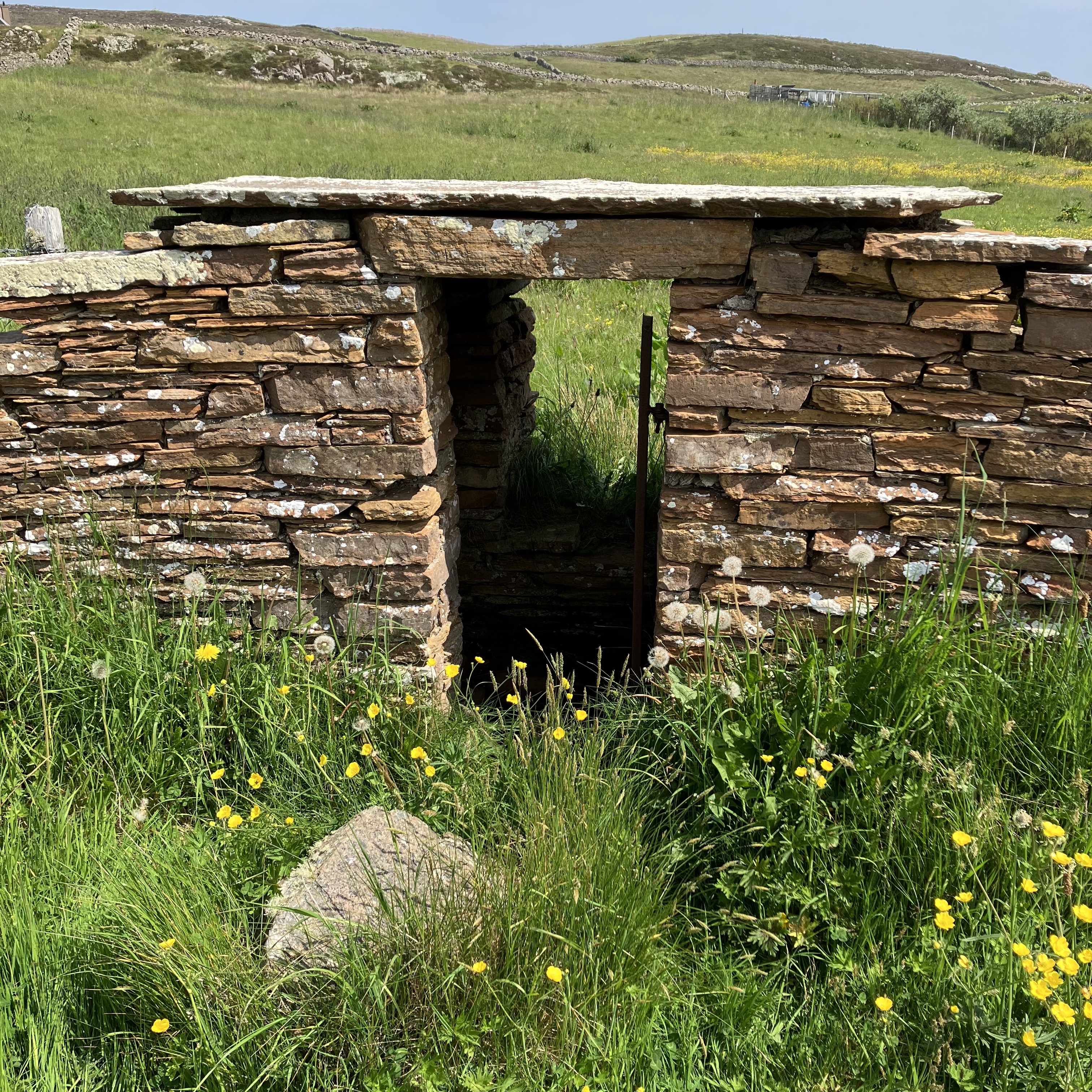
Orcadians used the well as a healing place. Haley in the Orkney dialect means holy. Luck, protection and healing are haley. What is sacred and what is haley, holy? Is there a difference? A healing or sacred well has special properties. It might be a place of devotion where a goddess, spirits, or fairies could intercede on our behalf in matters of fate. A holy well is a sacred place claimed by the Christian church, devoted to a saint and their baptismal lore. The old genius loci, the local goddess, often becomes overlaid with this story of conversion to Christianity, yet this didn’t happen to Haley Hole.
Nearby Hellihole Road is named after the well. Its cobblestones mark the pilgrimage route used by people from all over Orkney who once came to take the waters. Here’s another paradox of the sacred and profane mixed up together. Before the Norse people were Christianised, the road to Hell was once the road to Hel, the Norse goddess of the dead. The dead were buried in hell shoes—good walking shoes that would see them through the gruelling journey to Hel and her the world. (Ruth Ellis’ brilliant study of Old North death traditions, The Road to Hel, is well worth reading.) In pre-Christian thought a Hel hole would not be a damned place but a sacred one, a place between worlds. The sick are liminal beings. We hover between life and death. To heal ourselves, we might need a Hel hole—a place of anointing and initiation.

The red sandstone Haley Hole well house was built around it in the mid-19th century. There is much about the well on the allotment’s website, and the people who tend this part of the land with their permaculture community gardens are also caretakers of the well. One of the gardeners noted a faint ‘W’ inscribed into the lintel stone above the door.
It’s a witch mark. The interlocking V’s clearly carved on the lintel are a Marian symbol thought to have protective qualities by those who carved them. The mark atop the entryway is a kind of prayer—that one might be healed, and perhaps that the water be protected. These marks are are left in sea caves— a wish that a loved one returned from the sea. The carvings are palindromes—ambigrams—VV for Virgin of Virgins and M for Mother Mary. More elaborate witch marks are carved in the thresholds of buildings, presumably to protect the space from ‘witches.’ We can read ‘witches’ as malevolence of any kind. It’s always good for modern witch-adjacent folk to remember that historically a witch was a satanic monster, not a visionary or a benevolent herbalist—this is a modern idea we impose on the past. The most spectacular witch marks were found most recently at Cresswell Crags. They were thought to be graffiti until 2017, when two visitors on a tour pointed out that they might be something else, much older and more interesting.
Look at the palm of your hand— do you see the two upside down, interlocking Vs? They look like an elaborate, capital M with long trailing legs. One leg goes down to the middle of your wrist and the other trails off beneath your little finger. You, too, were marked even before you were born—a wee slip of a thing between worlds.
Other carvings on the well house I didn’t quite make out—I will return again to study them one day. It will be rainy and dark. The water tables will be high, seeping and flowing out all over the island. There might be a trickle up through the rubble, into the shady basin of the little red stone house. Could there be enough to sip?
Further Reading
https://www.orkneyjar.com/tradition/sacredwater/haleyhole.htm
https://thejournalofantiquities.com/2017/10/11/the-mineral-well-near-brinkies-brae-stromness-orkney/
https://stromnesscommunitygarden.wordpress.com/
https://stromnesscommunitygarden.wordpress.com/site/site-history-2/site-history/
Missives from the Verge is a reader-supported publication. To receive new posts and support my work, consider becoming a free or paid subscriber.

